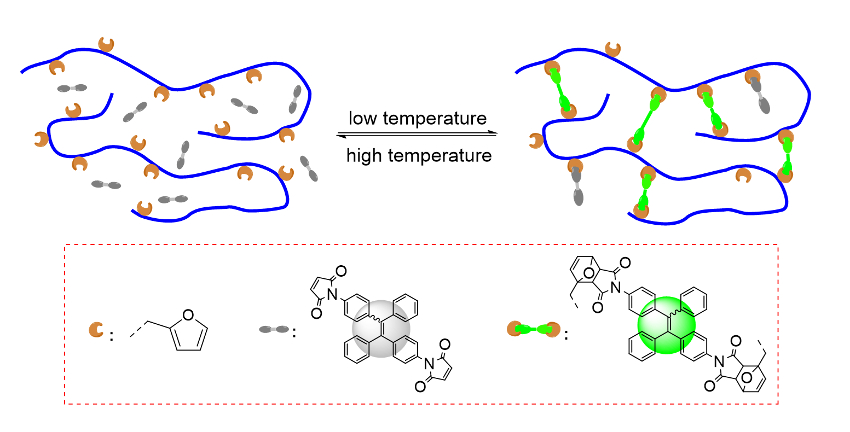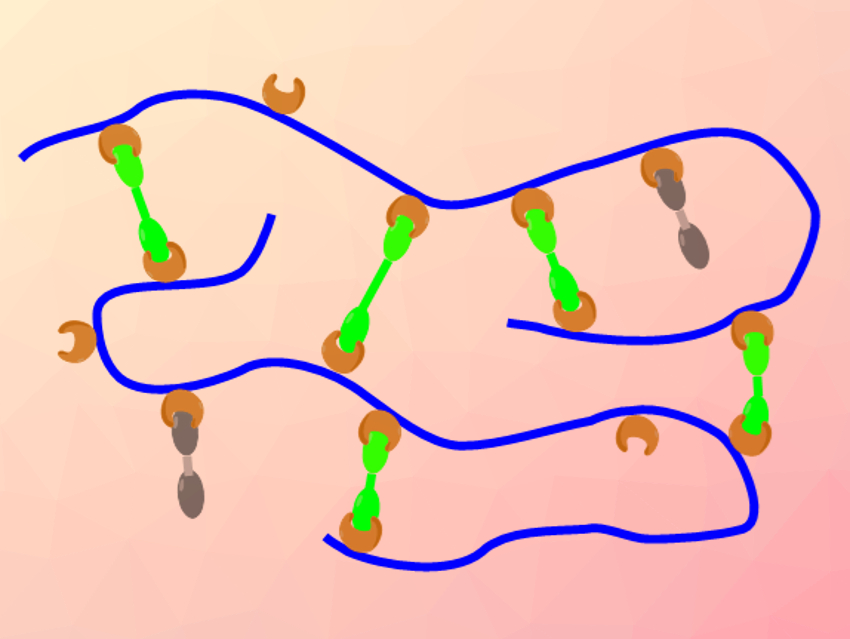Polymer materials with tunable fluorescence are used, e.g., in biological imaging, sensing, or information storage. However, for cross-linked polymeric materials, it is difficult to regulate their emission behavior due to their insoluble and unmeltable nature. The development of cross-linked materials with dynamic bonds could help to solve this problem.
Yu Jiang, South-Central University for Nationalities, Wuhan, China, and Nikos Hadjichristidis, King Abdullah University of Science and Technology (KAUST), Thuwal, Saudi Arabia, have developed Diels–Alder (DA) polymer networks which consist of linear copolymers (chains pictured in blue) that contain furan groups (pictured in brown), i.e., copolymers of methyl-, decyl-, or lauryl methacrylate with furfuryl methacrylate. These polymer chains are crosslinked by dimaleimide‐substituted tetraphenylethene units (pictured in grey/green).

The crosslinked-DA polymer networks show strong emission. Usually, dimaleimide‐substituted tetraphenylethene is non‐emissive due to a photo‐induced electron transfer (PET) between the maleimide and tetraphenylethene groups. In the cross-linked network, this PET process is prevented and the intramolecular rotation of the tetraphenylethene molecules is restricted, which turns on the emission.
The cross-linking-induced emission behavior can be adjusted via a reversible DA/retro-DA reaction, which can be influenced by the temperature. At high temperatures, the retro‐DA reaction is dominant, and the fluorescence is quenched by opening the cross-links. In contrast, at low temperatures, the emission recovers as the DA reaction takes over. Cross-linking-induced emission provides a new strategy for regulating the fluorescence of polymer materials. According to the researchers, this could lead to applications, e.g., in smart coatings or information security.
- Diels–Alder Polymer Networks with Temperature‐Reversible Cross‐Linking‐Induced Emission,
Nikos Hadjichristidis, Yu Jiang,
Angew. Chem. Int. Ed. 2020.
https://doi.org/10.1002/anie.202013183




